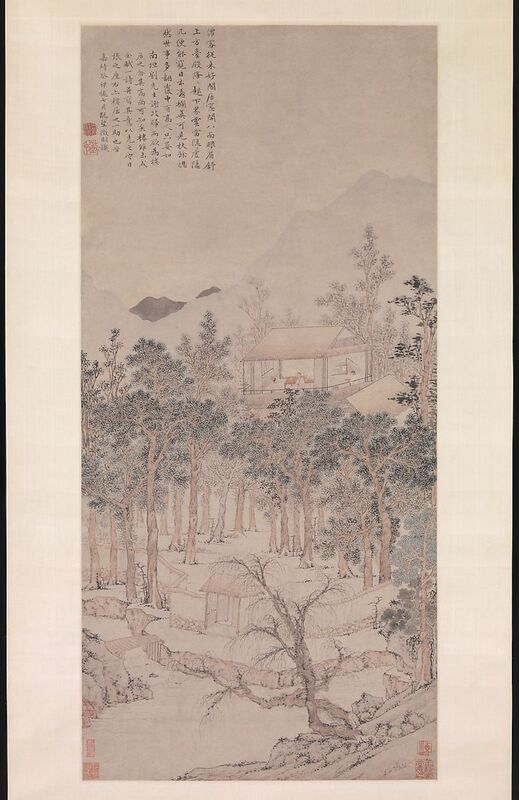|
Living Aloft: Master Liu's Retreat, Wen Zhengming, 1543, Metropolitan Museum of Art
https://www.metmuseum.org/art/collection/search/39536 Immortals have always delighted in pavilion-living, Windows open on eight sides-eyebrows smiling. Up above towers and halls well up, Down below, clouds and thunder are vaguely sensed. Reclining on a dais, a glimpse of Japan, Leaning on a balustrade, the sight of Manchuria. While worldly affairs shift and change, In their midst a lofty man is at ease. This is a beautiful representation of the history of a man's life. The three teachings of Chinese philosophy are depicted here: Confucianism, Taoism and Buddhism, as are the three perfections: painting, calligraphy and poetry. Confucianism may be interpreted as the first stage of a person's life: acquiring things, forming relationships, raising a family, and building a career. This is seen in the distance of the painting and in images of the city. The Taoist stage is illustrated by a "a lofty man at ease", who in the company of a friend, enjoys freedom in favoring the eternal over the temporal. The Buddhist stage is illustrated through the forward looking windows. Not withstanding adherence to any particular set of beliefs, one may gain spiritual understanding through observations of this painting. |
Archives
August 2022
Categories |

 RSS Feed
RSS Feed